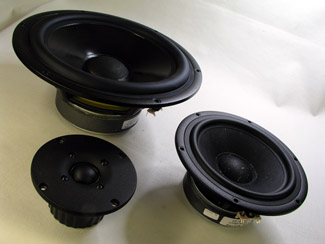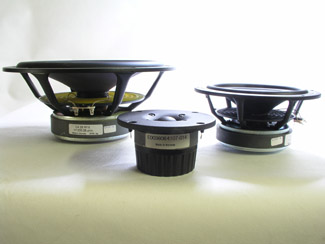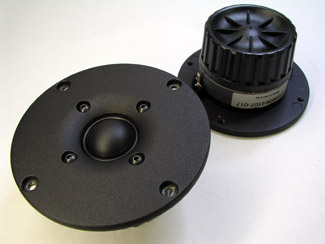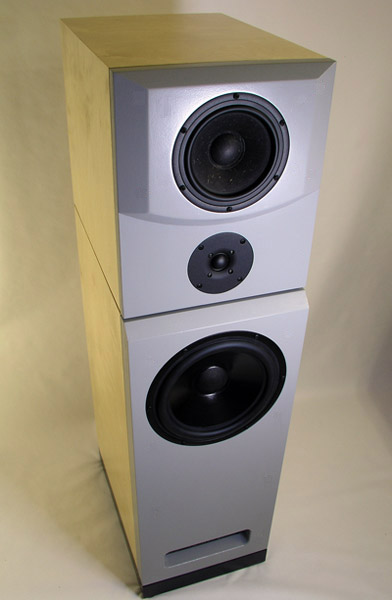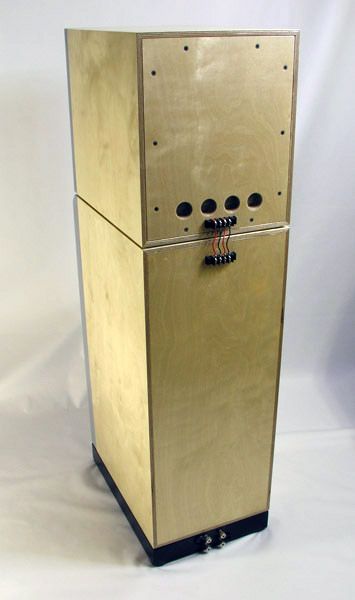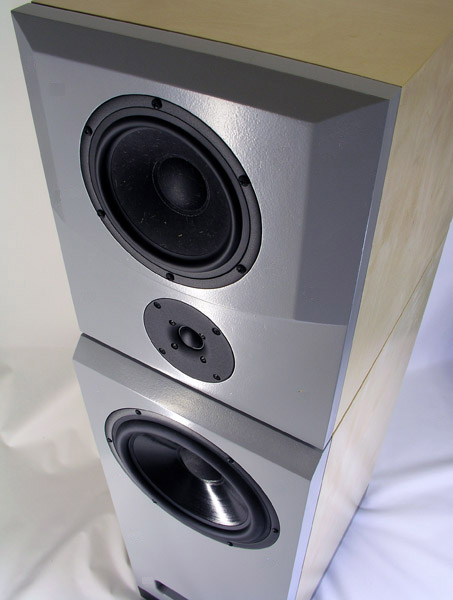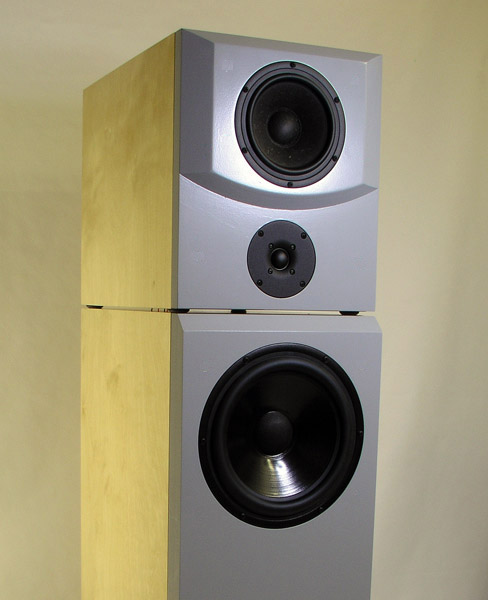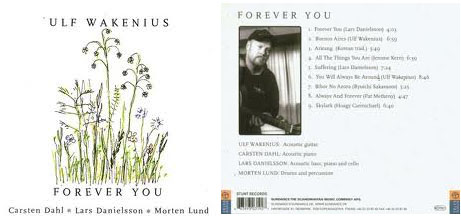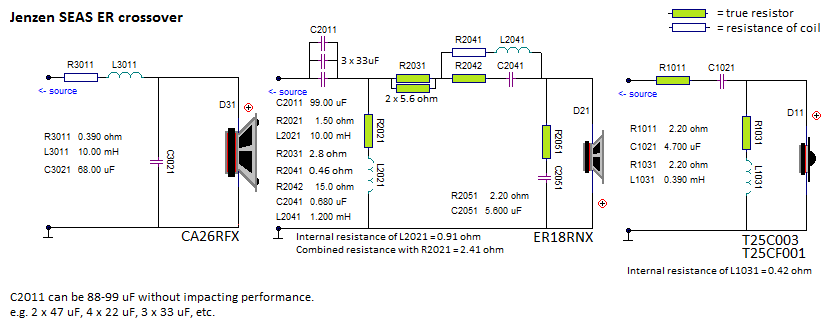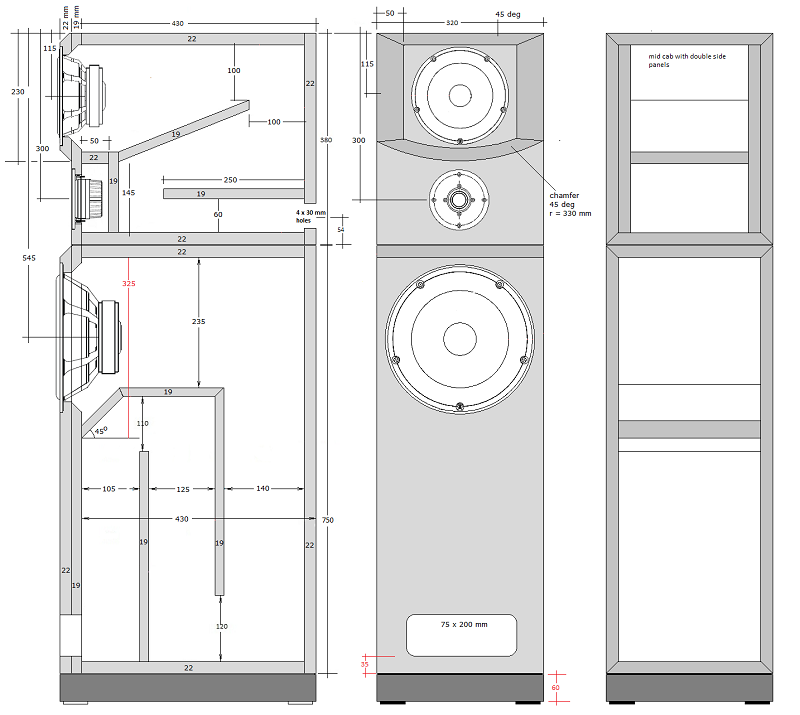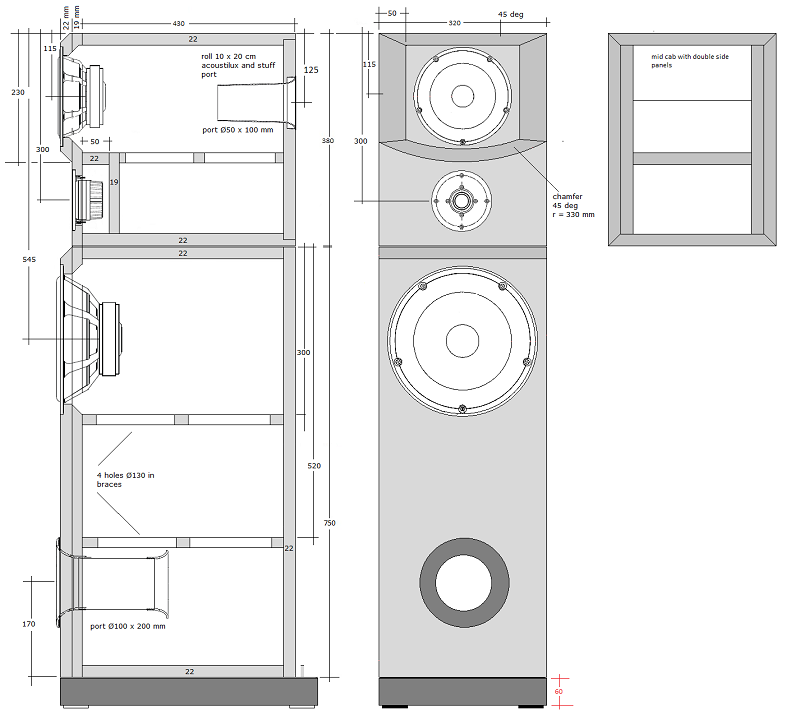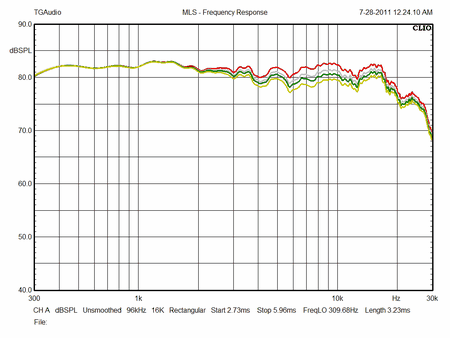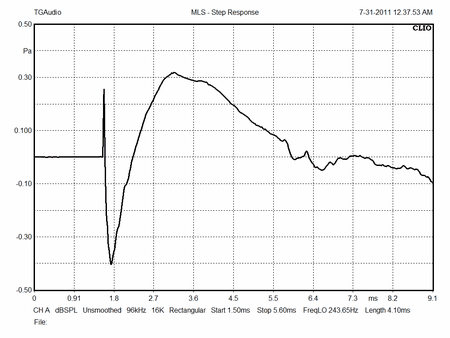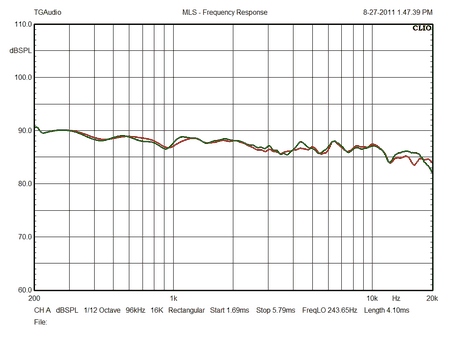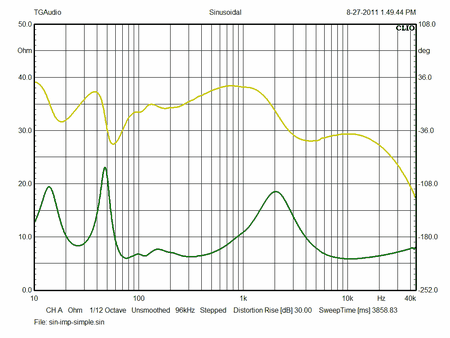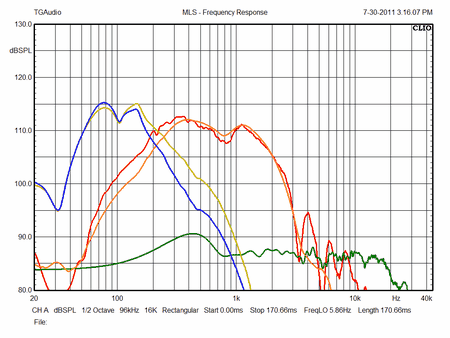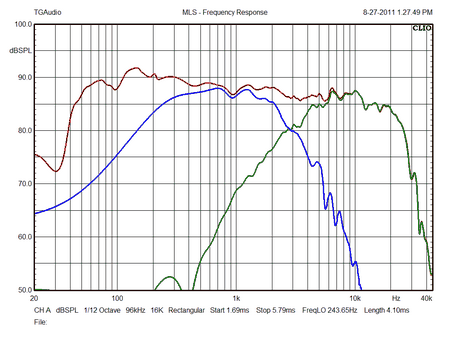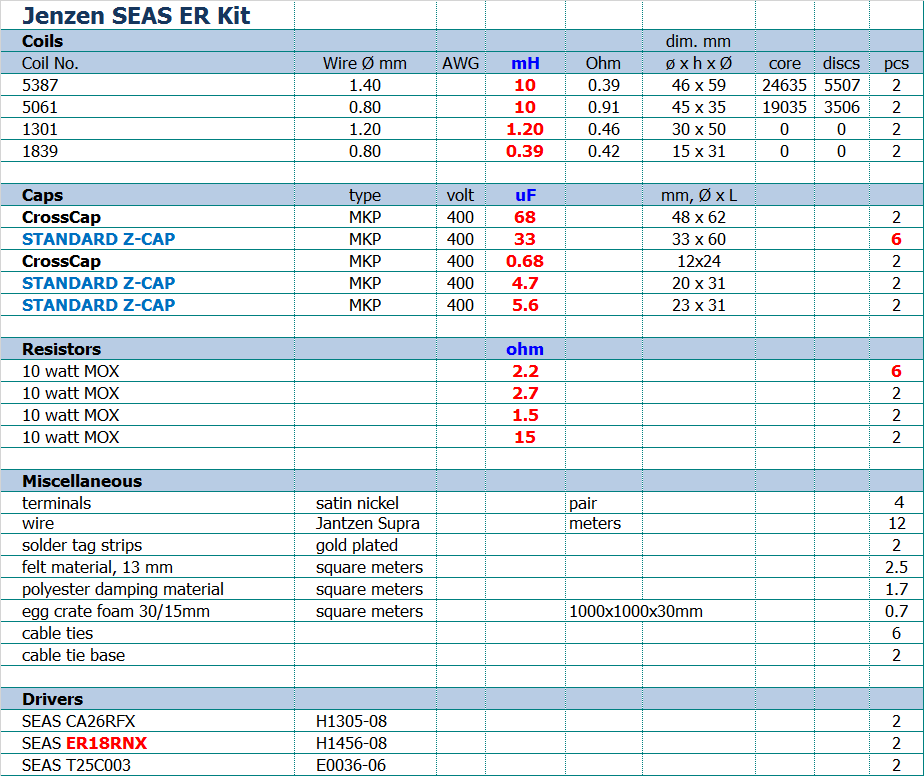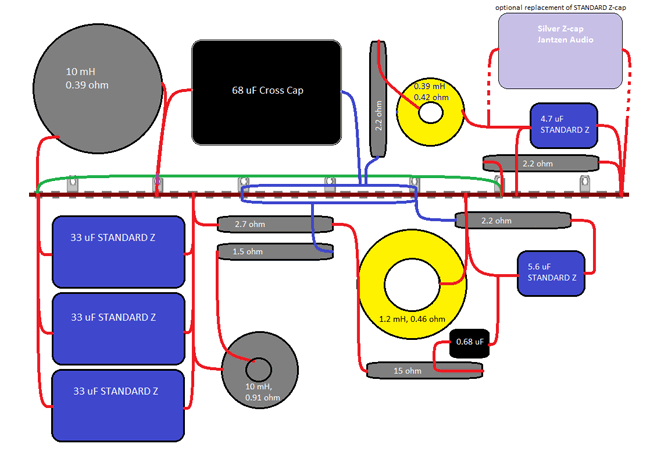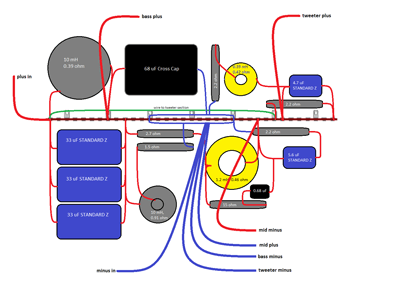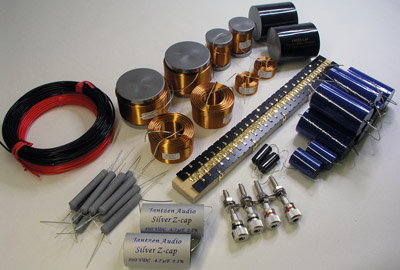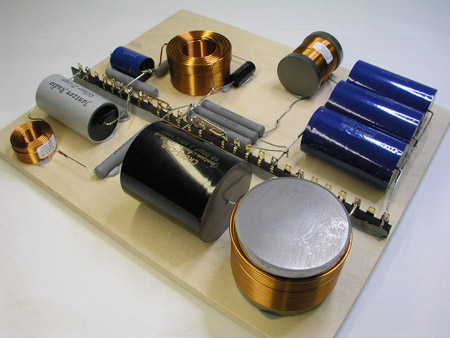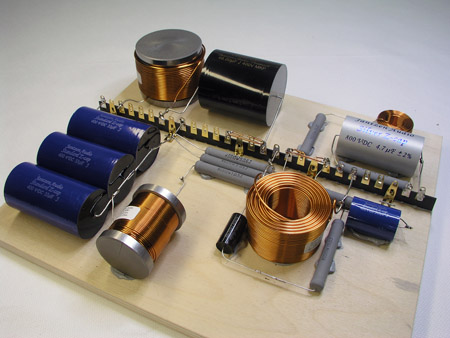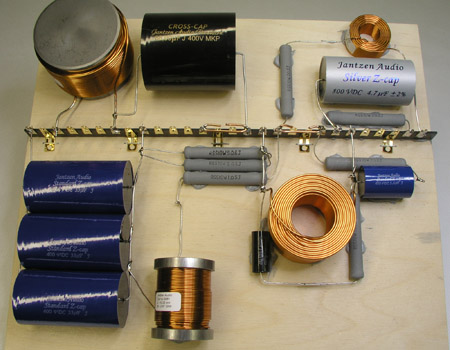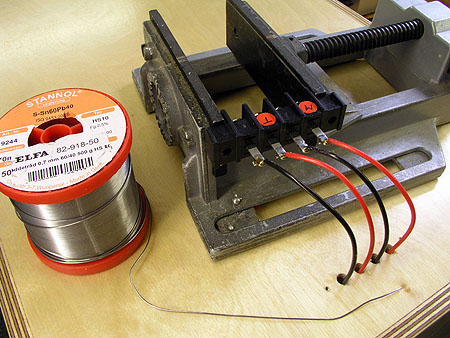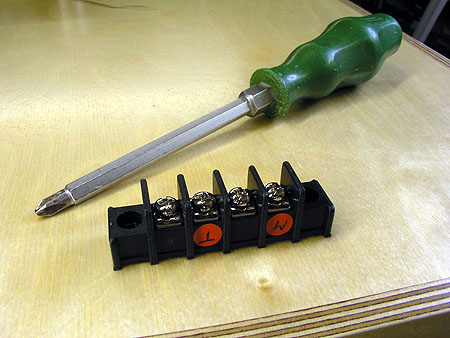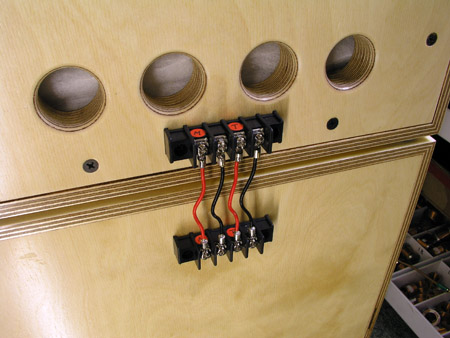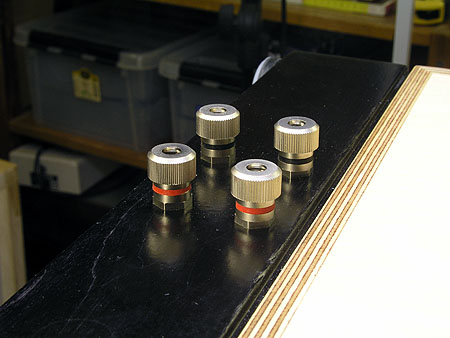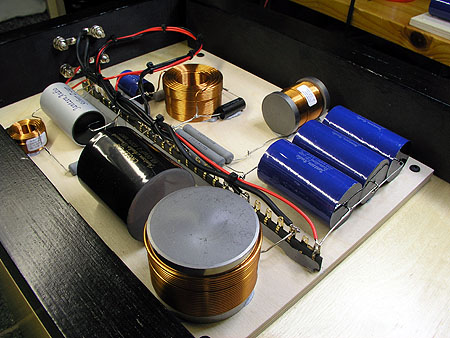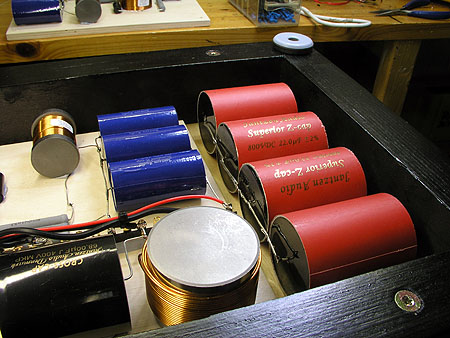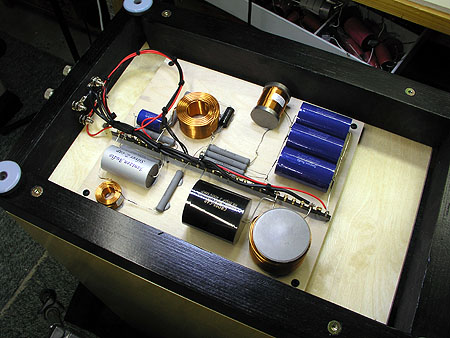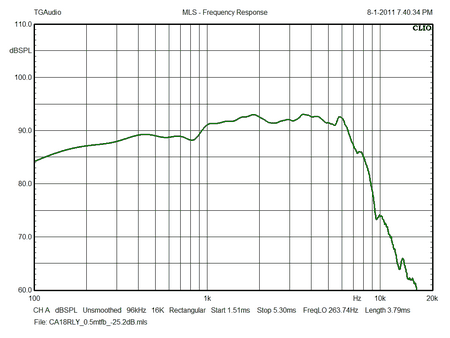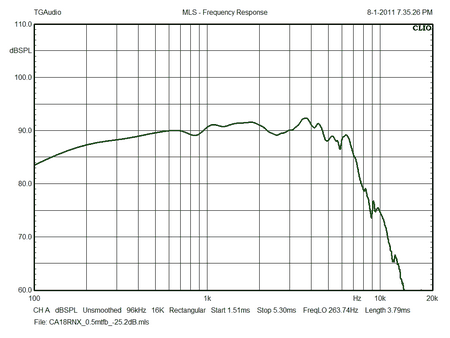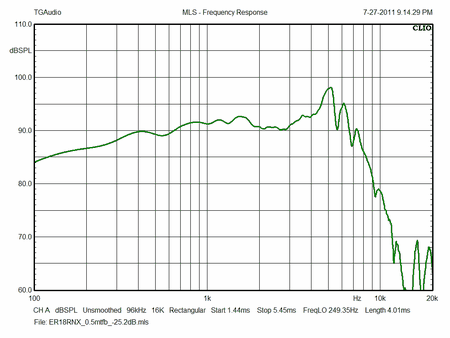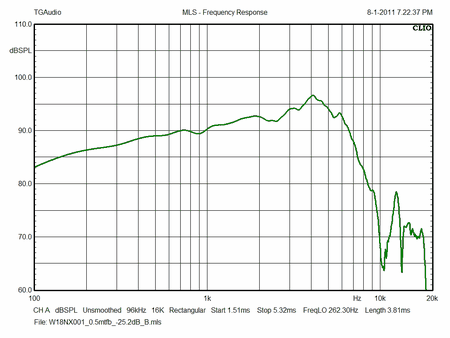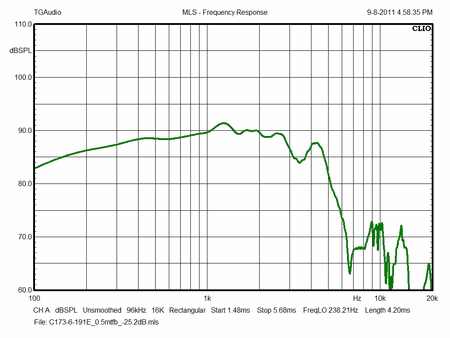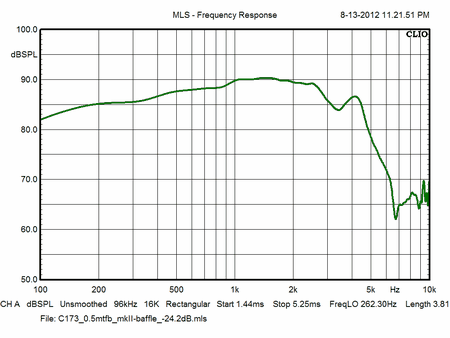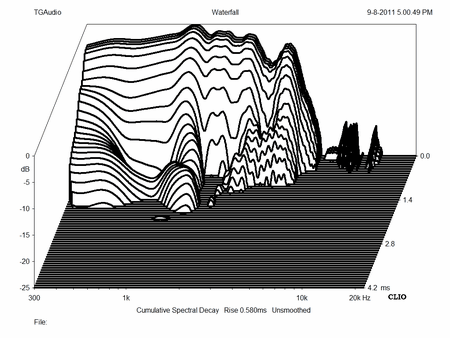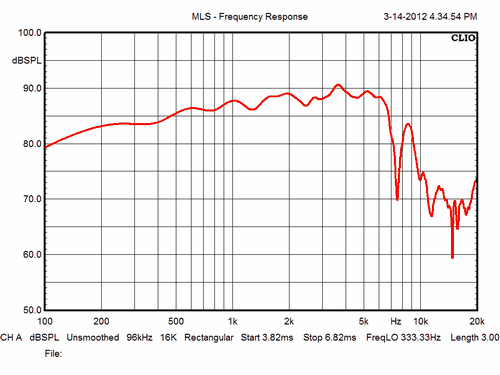|
DIY Loudspeakers: HOME INDEX UPDATES RESPONSE WHAT'S NEW
Jenzen
SEAS ER
Crossover Cabinet Measurements Speaker Kit Crossover Layout 6" drivers on the Jenzen baffle Download driver specs for CA26RFX ER18RNX T25C003 / T25CF001 |
|
|
5th Oct 2020: As nobody builds the
version with the CA18RNX middriver, this version has been
discontinued.
The first speaker in the Jenzen series comes with modest priced drivers, yet delivers a significant soundstage. Size matters and using drivers with a decent membrane area means they don't have to move much. In particular for the midrange this is important and releasing it of the tedious task of pumping bass, things start developing. Drivers we may have found having a harsh upper mid in the common two-way set-up may all of a sudden deliver crystal clear sound in all of the midrange. The Jenzen series of speakers
are meant to offer high-end sound for low-end price, even for the
constructions to come with expensive drivers. As discussed in
Speakers' Corner; what diy people can do speaker manufacturers cannot,
is this: Spoil our drivers with the best of cabinet work. MDF is cheap and it's no problem making 30-50 mm
panels and adding solid bracing to produce low-resonance enclosure that is often
a
significant part of high-priced speakers. I recall Eggleston speakers, and the knuckle tap test suggests a solid log of wood.
No problem. Laminate 2 x 22 MDF; add bracing and we have the same
thing. And it pays off. Cabinet resonances add more to the sound than
we may think. The drivers for SEAS ER come for less than 700 USD ( @ Madisound; we in Europe have to face some ~20% value added tax) and if you have the time and skills to make cabinets, you're in for a treat for a fraction of what a similar commercial speaker will cost. Without blushing I dare say the finished speakers will compare to commercial speakers in the 10-20 kUSD range. But you have to be prepared for quite some woodwork. These four cabs won't emerge from a couple of weekends' late night hours. With the ER18RNX, SEAS is back into hard pressed paper cones, not
seen since the Excel W21EX001. This ER18RNX cone is or has been
added
some reed pulp, usually used for water reed roofs. Bass driver CA26RFX features a standard coated paper cone, rubber surround, huge magnet and healthy 90 dB sensitivity. As always from SEAS: Well built. For tweeter I could have chosen one from the PRESTIGE range, but finally decided on the EXCEL T25C003/T25CF001. This tweeter comes with excellent build quality and it doesn't add much in overall building cost. Due to low slope crossovers it may prove beneficial to use the T25CF001 having ferrofluid in magnetic gap. The crossover features the simplest
possible LR2
filter and for proper integration of amplitude and phase the middriver
is 19 mm in front of the tweeter. The significance of this is
noticeable, in particular on vocal performances and e.g. acoustic
instruments like flute, oboe and piano. Furthermore the edgy
snappiness of high-frequency transients is reduced for a more
ear-friendly presentation with enhanced sense of depth and
spaciousness.
The sound Yes, I'm going to write a
little about the sound, something I really hate, because what I
hear is
not what you will hear. Nevertheless: This speaker
delivers tonnes of detail. I can't help putting this first, because the
mid-tweeter integration works so good that it will provide a rare
insight to your recordings and it also tells good from bad, albeit not
in any aggressive way. It's a never ending topic how much power is needed for a given speaker. The short answer is that it depends on how loud you play. The CD above is Ulf Wakenius: "Forever you". This is an analog recording (2007) and you can even hear a faint tape hizz from the recording. Very little compression is used - if any. Apart from liking the music, I use this CD to test my speakers for loose wires or whatever. It comes with tremendous dynamics and will make anything capable of rattling - rattle. It also makes a litmus test on your amp's capability of handling severe transients and playing this CD really loud it could make even the Jungson start clipping! And this not at a level where the drivers would suffer serious risk of damage. Two things: This speaker can handle a lot of power and if you're a head banger, prepare for some 100 watts minimum solid state amp. Bass is tight and surprisingly dynamic and kick drum comes through really
well, much better than anticipated I have to say, and speaking of drums,
the whole drum kit comes through with all the speed and agility I could ask
for. Evaluation was done with STANDARD-Z-caps to the midrange and a Silver-Z to the tweeter. With STANDARD-Z to the tweeter some details are gone and upper mid and treble appears a bit more compressed, all in accordance with standard polyprop performance. Good caps make listening easier and we can better sort out details, room reverberation seems more clear and e.g. applause from an audience all of a sudden sounds like clapping rather than just noise. Hand clapping is a terribly good test on capacitor's ability to transmit complex information without smearing detail. FAQs having the answer NO: *1st order filters may be nice but don't handle power very well. To my mind we need a 4-way speakers to realise true 1st order filters and we need driver being linear some two octaves below and above point of crossover. True 1st order filters a prone to become extremely complex as we need to linearise drivers' response and this speaker was made to be simple with as few crossover components as possible without sacrificing performance. 1st order filters are not just a coil and a cap! I've tried modelling a 1st order filter and the mid has to be some 5-6 dB below system sensitivity (8 ohms series resistor!) and the bass and tweeter cross only 12 dB down at 1 kHz! We need a middriver with really low efficiency to make this work - technically. Or we should use a dedicated subwoofer and let the middriver go below 80-100 Hz. No wonder Vandersteen speakers are seriously inefficient (~85 dB). FAQs having the answer YES:
Useful links (Please read before writing!):
FAQ (Please read before writing!):
|
|
|
Click image to go to cabinet construction website. Obviously you can use 22
mm MDF in replacement of the Baltic birch used here and if you think all this
transmission line stuff is just a bit too weird - and it does admittedly
add to the overall volume - you can make a vented version instead. Jantzen Audio ports: For
bass cab: 2 pcs 100 mm (ID) x 200 mm, item #900029. For mid cab: 2 pcs
50 mm (ID) x 145 mm, item #900023. Cut to required length for mid and
for bass if you choose the large vented option. If you do so, add two
braces to the bass cabinet and one brace to the mid cab. Please check
other files for how this can be made, e.g QUATTRO cabs. Generally measurements
tell close to nothing about the sound of a speaker system, thus only
a few will be shown. From 300-3000 Hz we have a fairly flat response providing
lots of presence and
detail. As always: You MUST try out the various resistors for tweeter attenuation. It's a key element in fine-tuning your speakers to your system, your room and your taste. I use 2R7 for R1011 but, I know many younger people prefer excessive treble. Your ears may be more tolerant. 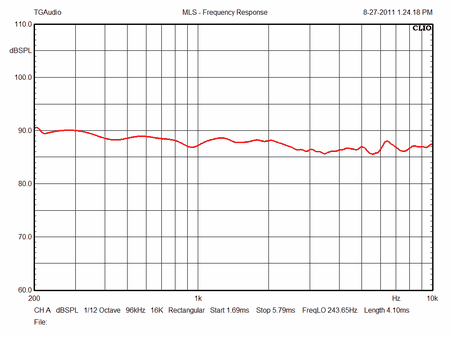
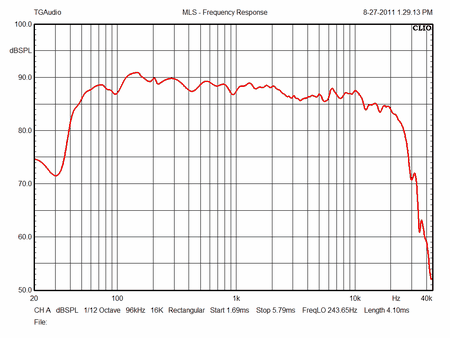 Left: SPL @ 0.5 meter between M and T, normalised for 2.8V, 1 meter. Overall system sensitivity = 88-89 dB/2.8V. Right: Response merged @ 250 Hz with bass nearfield response. Port response not included.
The
Complete Jenzen SEAS ER Kit
For price quotation
incl. shipping, please contact Jantzen Audio at: contact@jantzen-audio.com
Download SEAS Jenzen ER Kit Sales Presentations.
As the crossover is going
to be placed at the bottom of the bass cab, we have lots of space and
you may increase board size to later accommodate Superior Z-caps, wax
coils or whatever.
As can be seen from photos,
bass and mid/tweeter sections are separated for the sake of bi-wiring.
Below the response of 6"
drivers I have at hand over the last year. I'm pleased with the performance of
the Jenzen baffle as all of these response profiles allow simple
crossovers to be made. In particular the W18NX001 is smooth as ever and
even the ScanSpeak 18WU performs very well.
|
